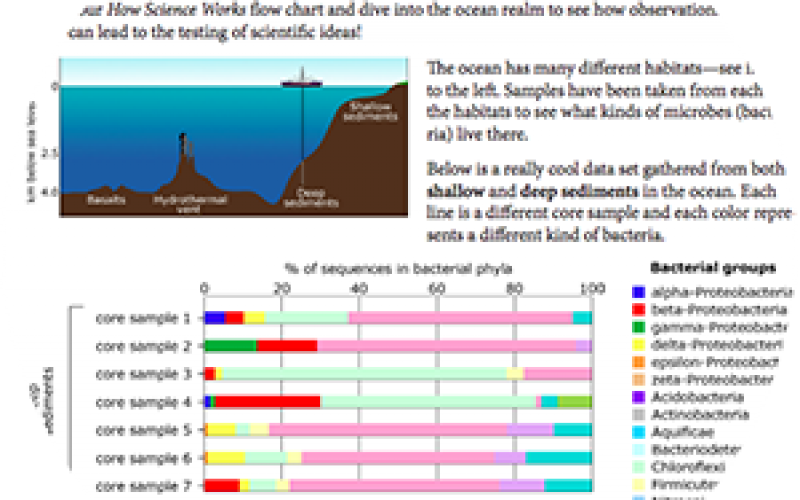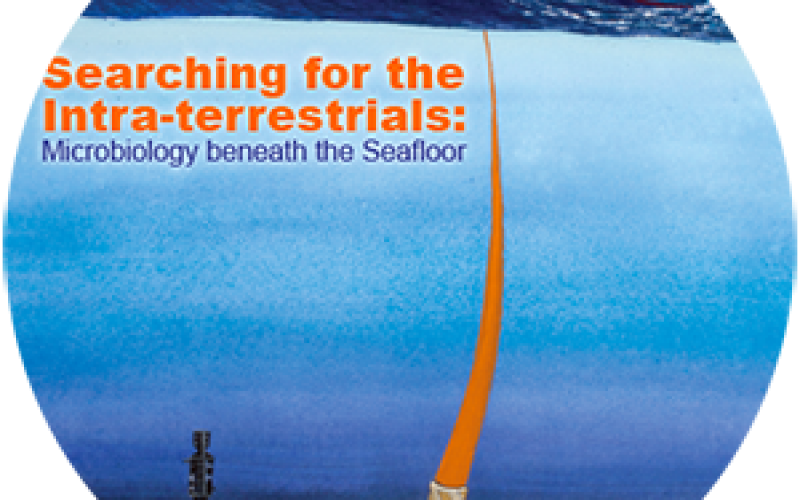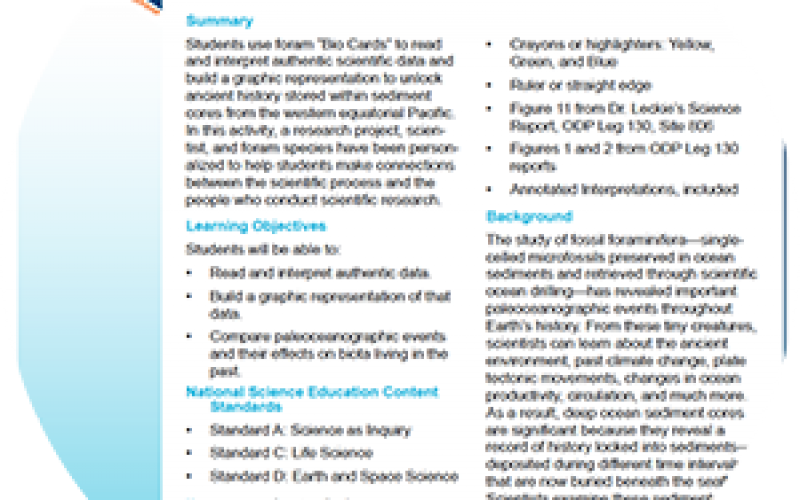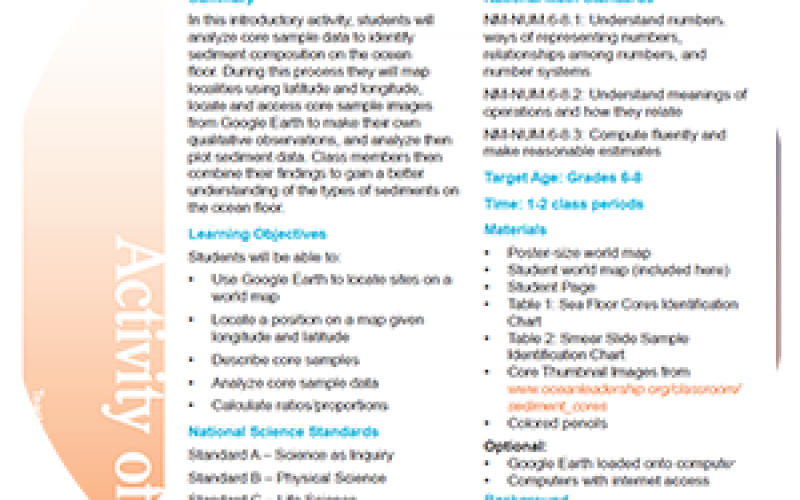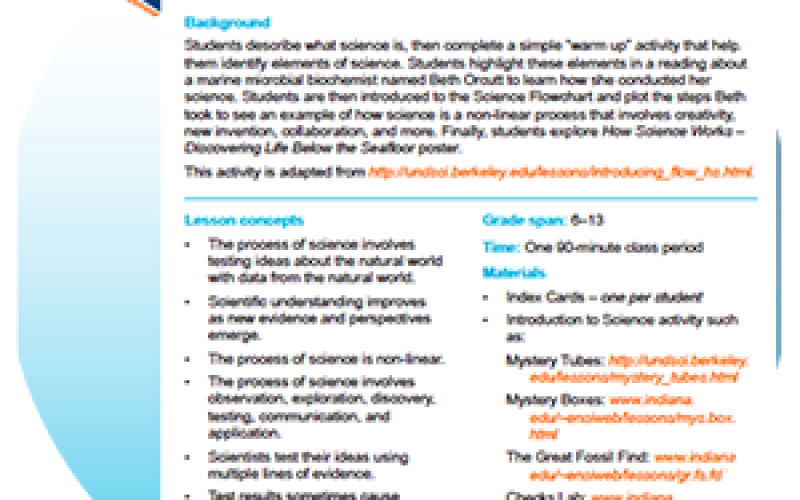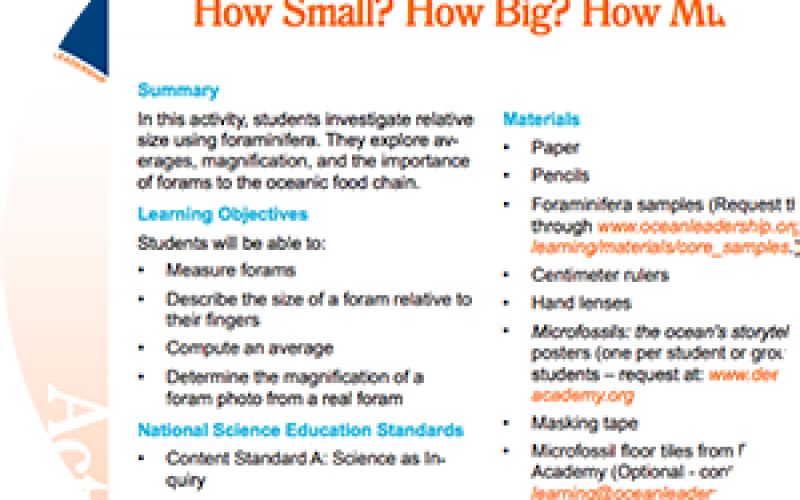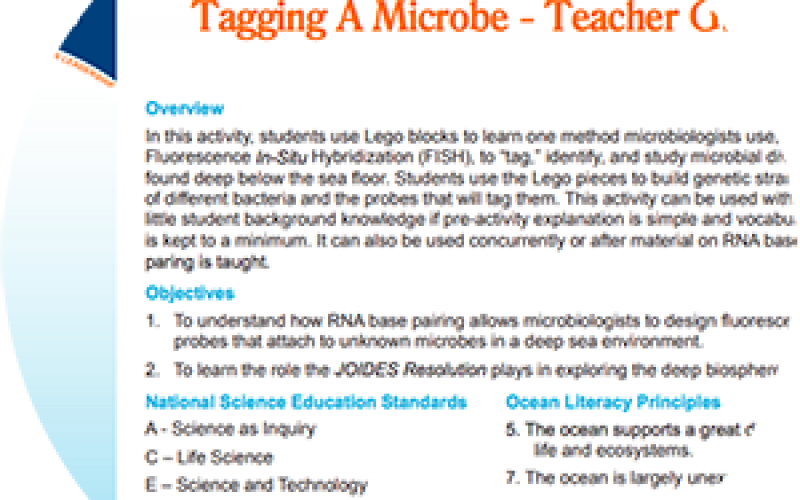Present students with this data set of microbial phyla from the deep biosphere and guide them to identify patterns then form and test multiple hypotheses about the questions they generate. Then they reflect on the elements of "doing science" they experienced and use the Science Flow Chart to document the process they engaged in and share what they would do next.
The artwork on this poster depicts research on microbe diversity in the deep biosphere. The activity on the back utilizes Lego blocks to model a method microbiologists use, called Fluorescence In-Situ Hybridization (FISH), to “tag,” identify, and study microbial diversity deep below the sea floor.
We made an updated version of this lesson! Check out Digging Deep for Evidence of Changes on Earth.
Students highlight these elements in a reading about a marine microbial biochemist named Beth Orcutt to learn how she conducted her science. Students are then introduced to the Science Flowchart and plot the steps Beth took to see an example of how science is a non-linear process that involves creativity, new invention, collaboration, and more.
Using the Microfossils: the ocean’s storytellers poster, this lesson will help students understand the size of microfossils found in core…
In this activity, students use Lego blocks to learn one method microbiologists use, called Fluorescence In-Situ Hybridization (FISH), to “tag,” identify, and study microbial diversity found deep below the sea floor. Students use the Lego pieces to build genetic strands of different bacteria and the probes that will tag them.
